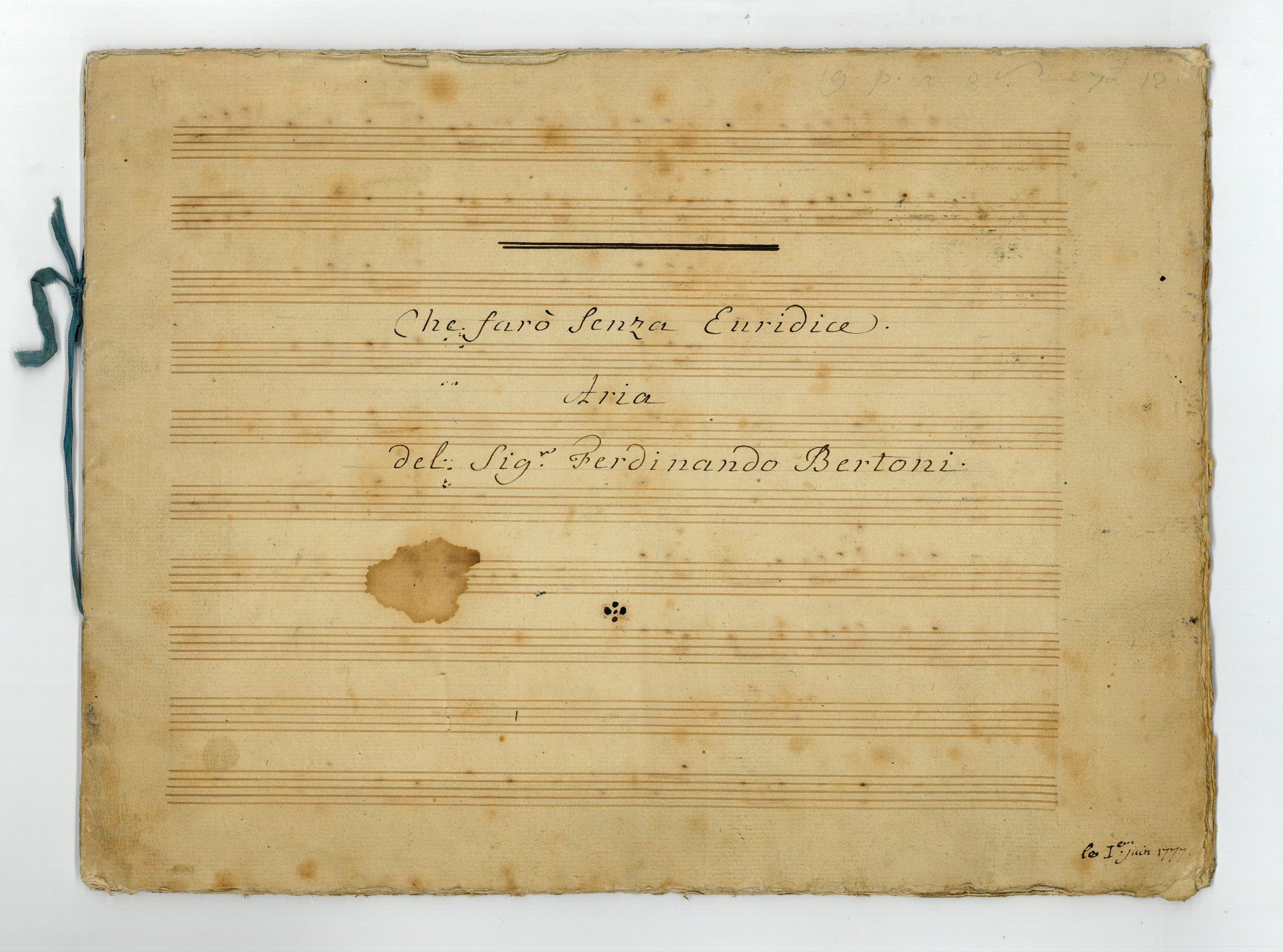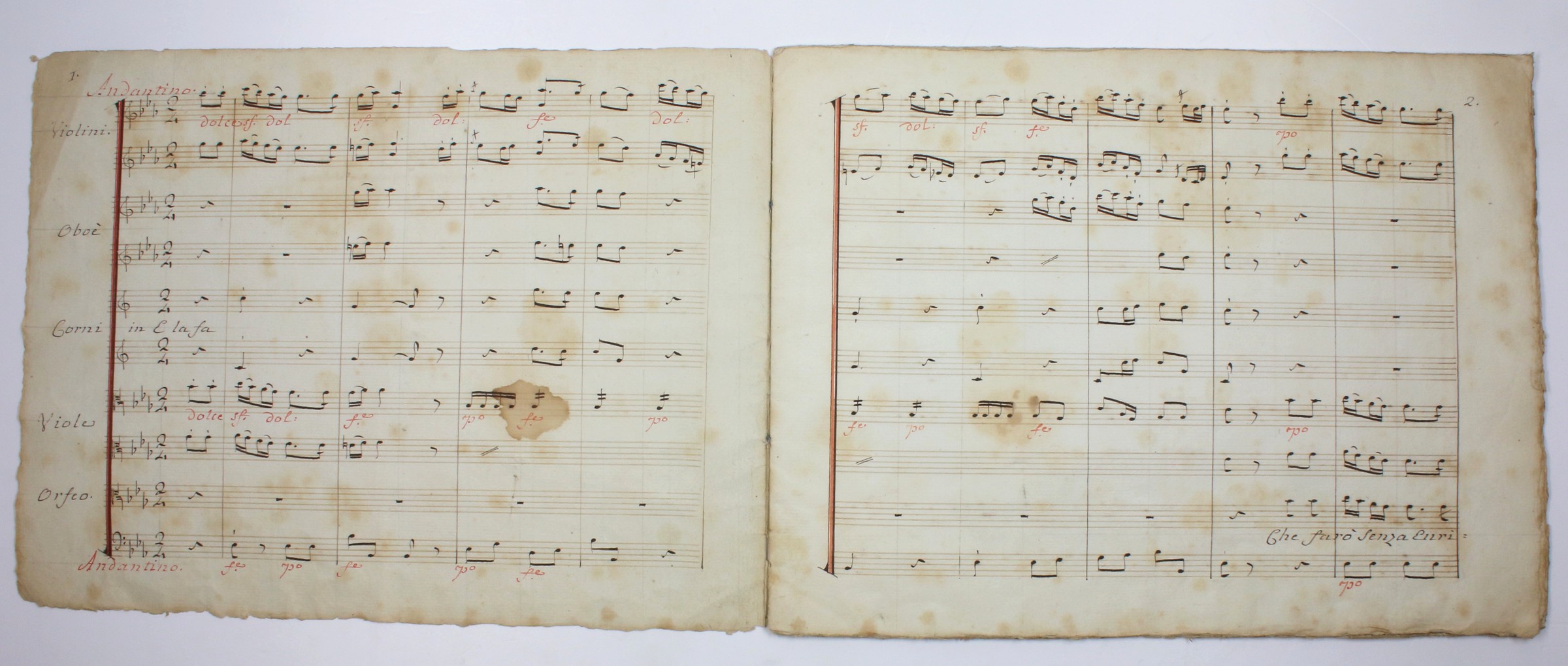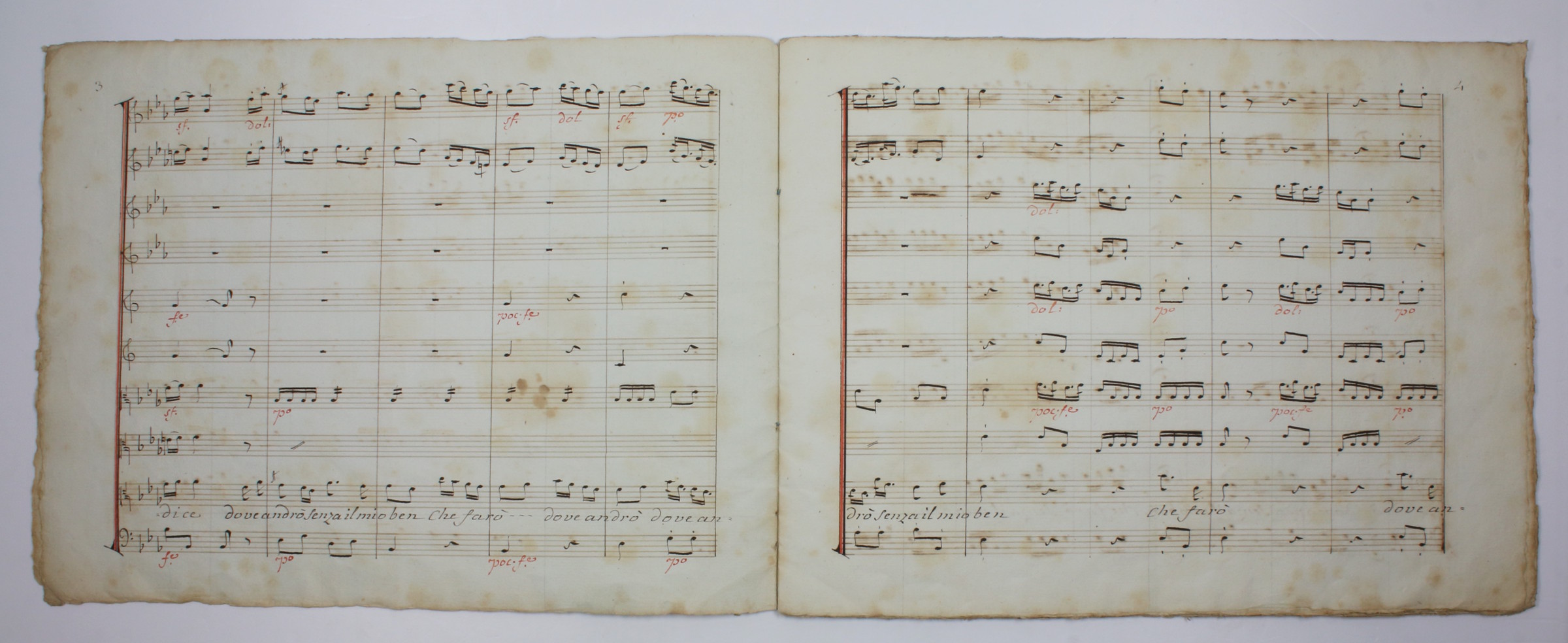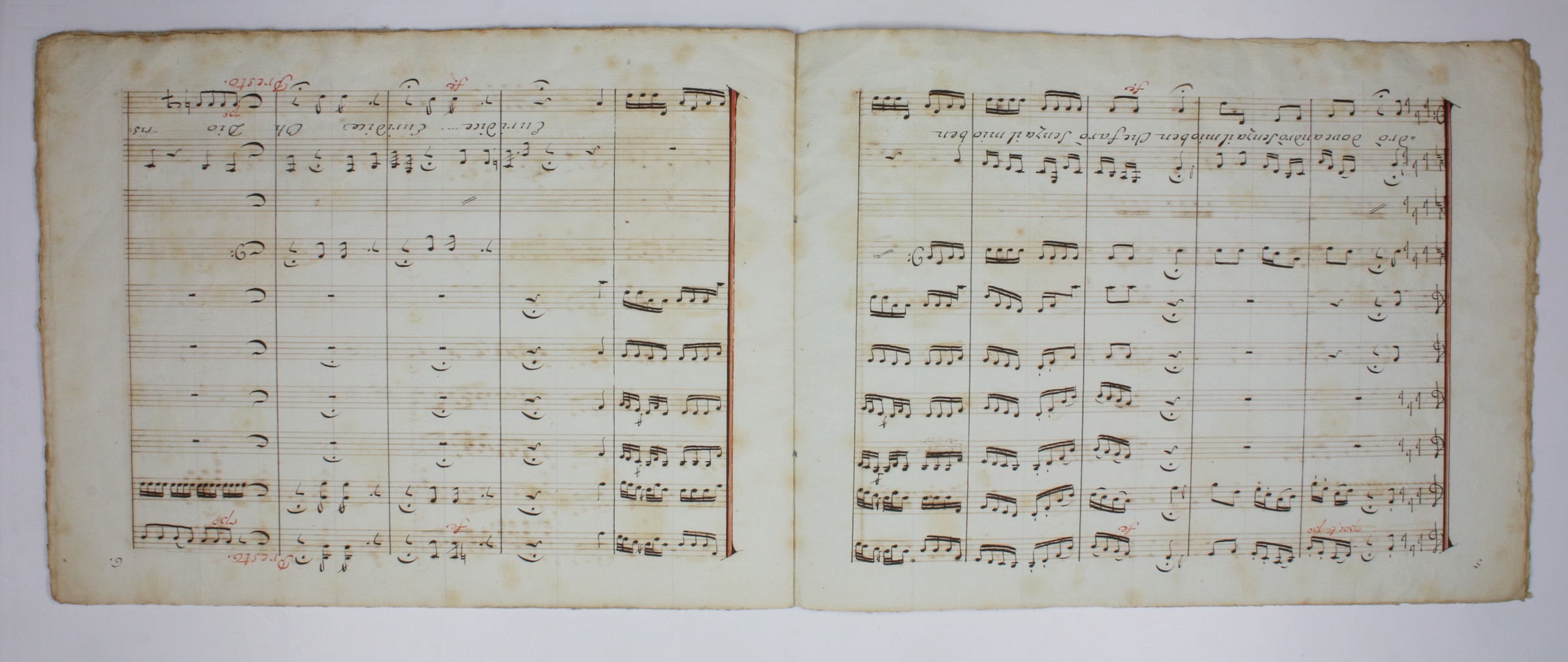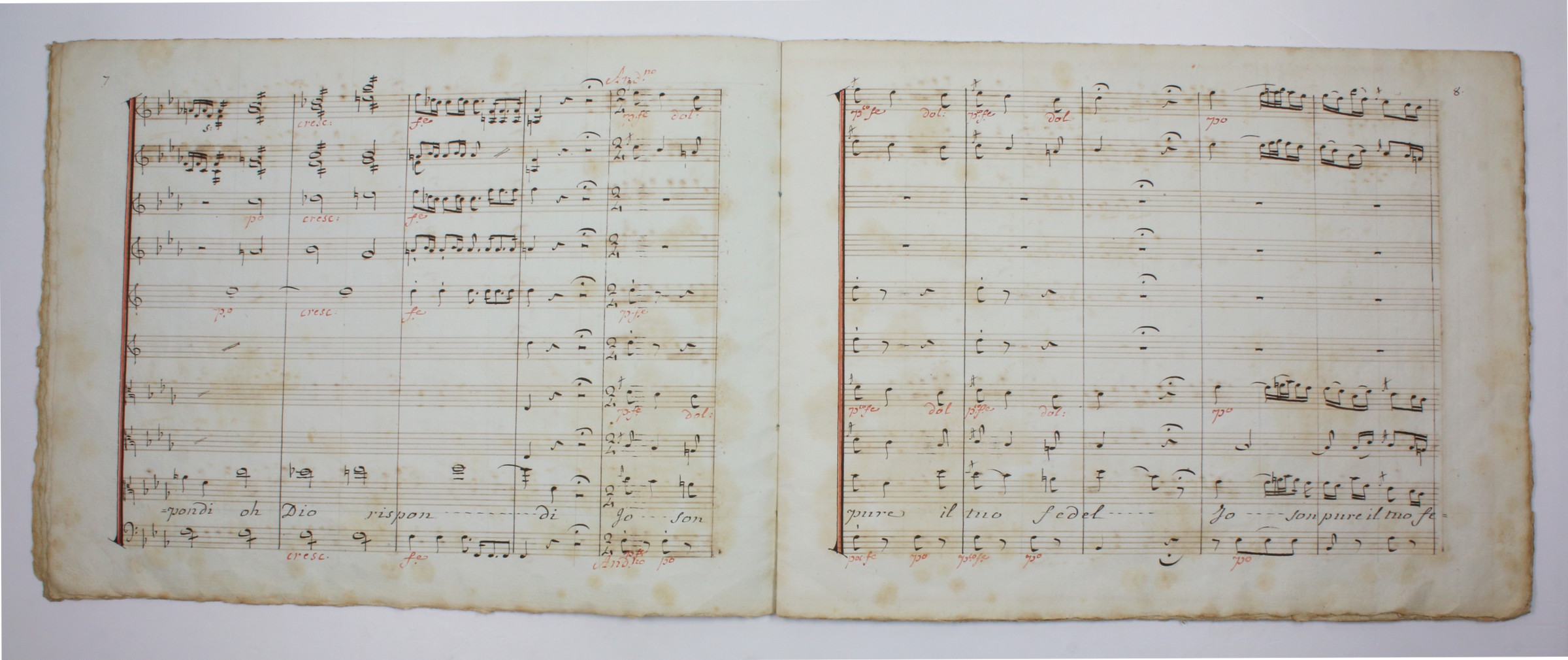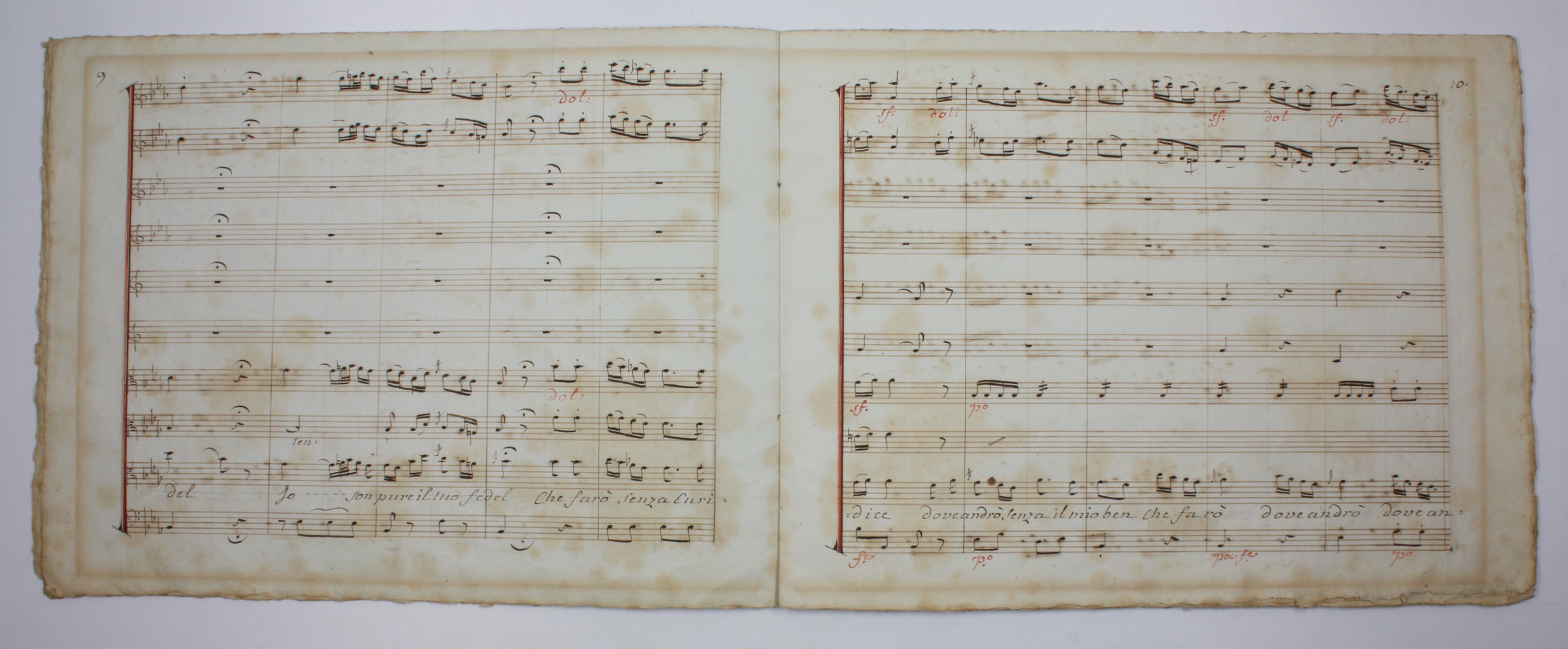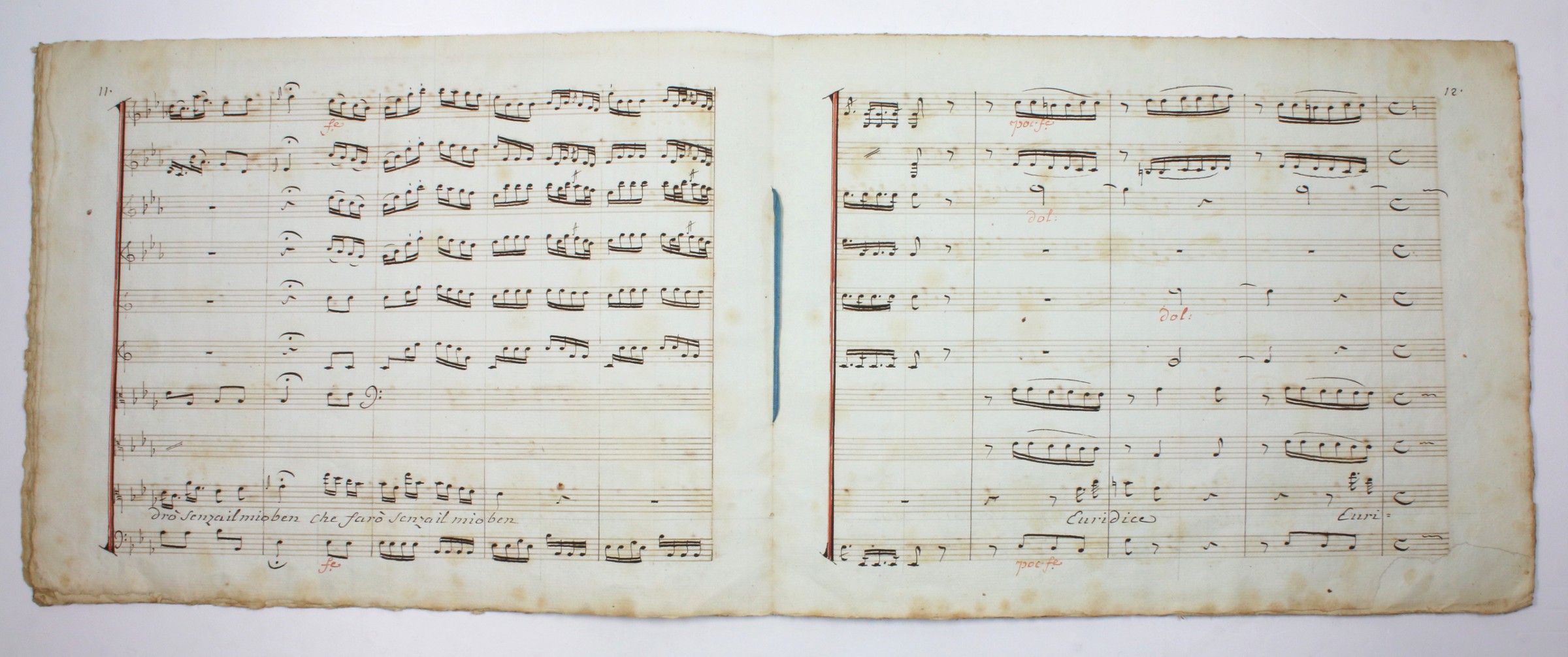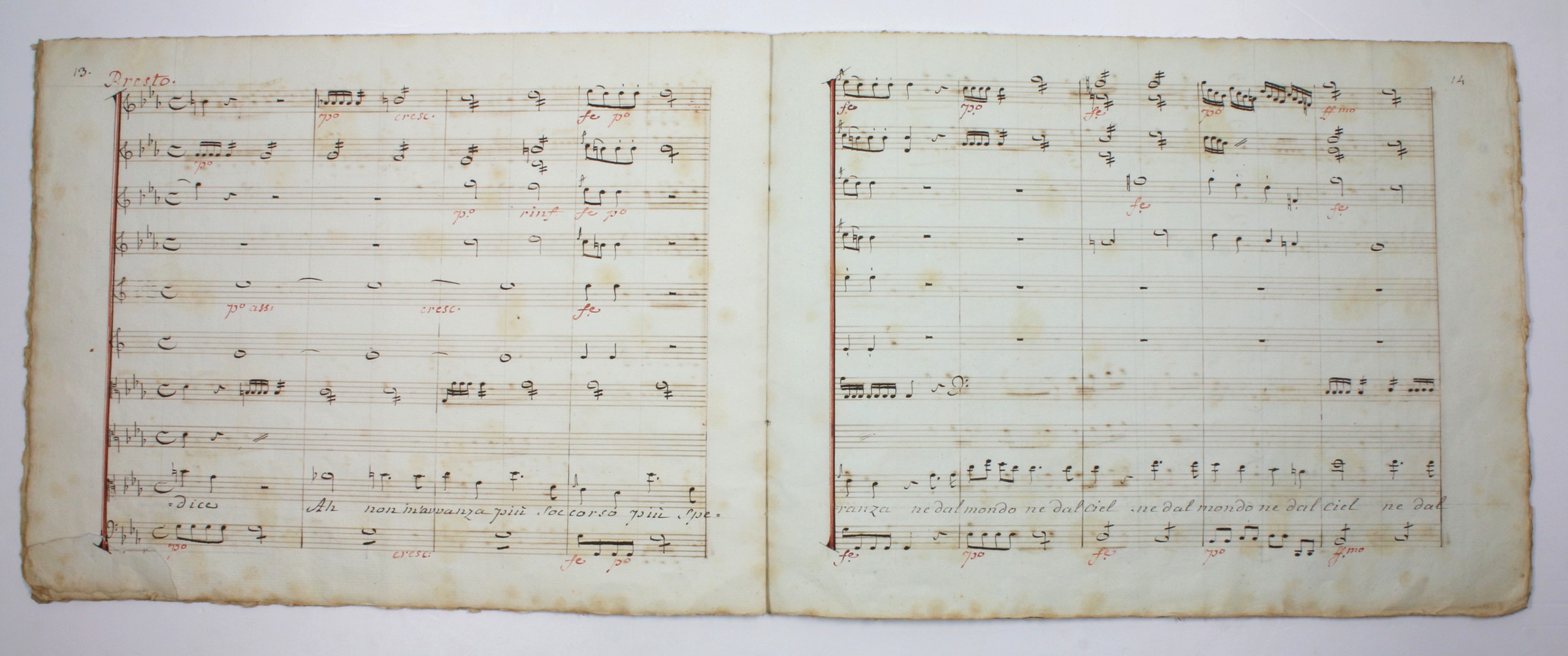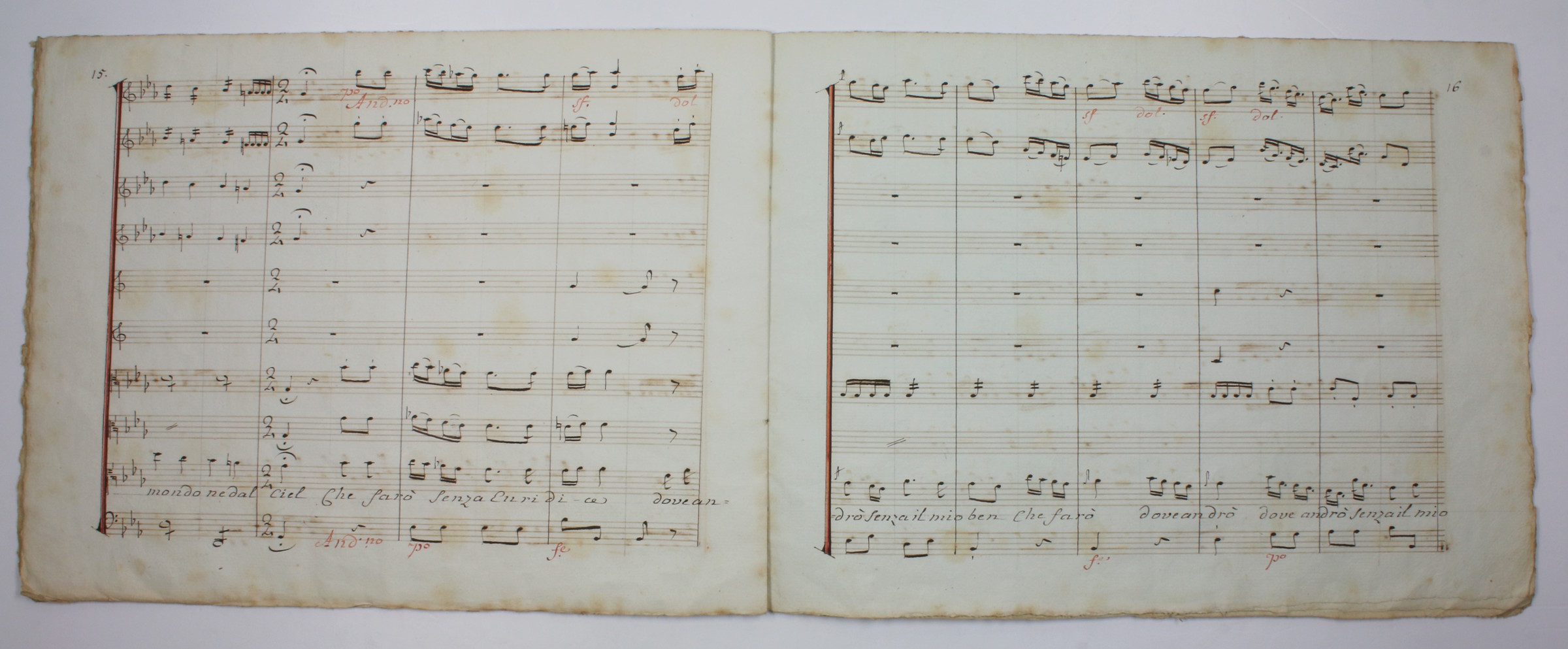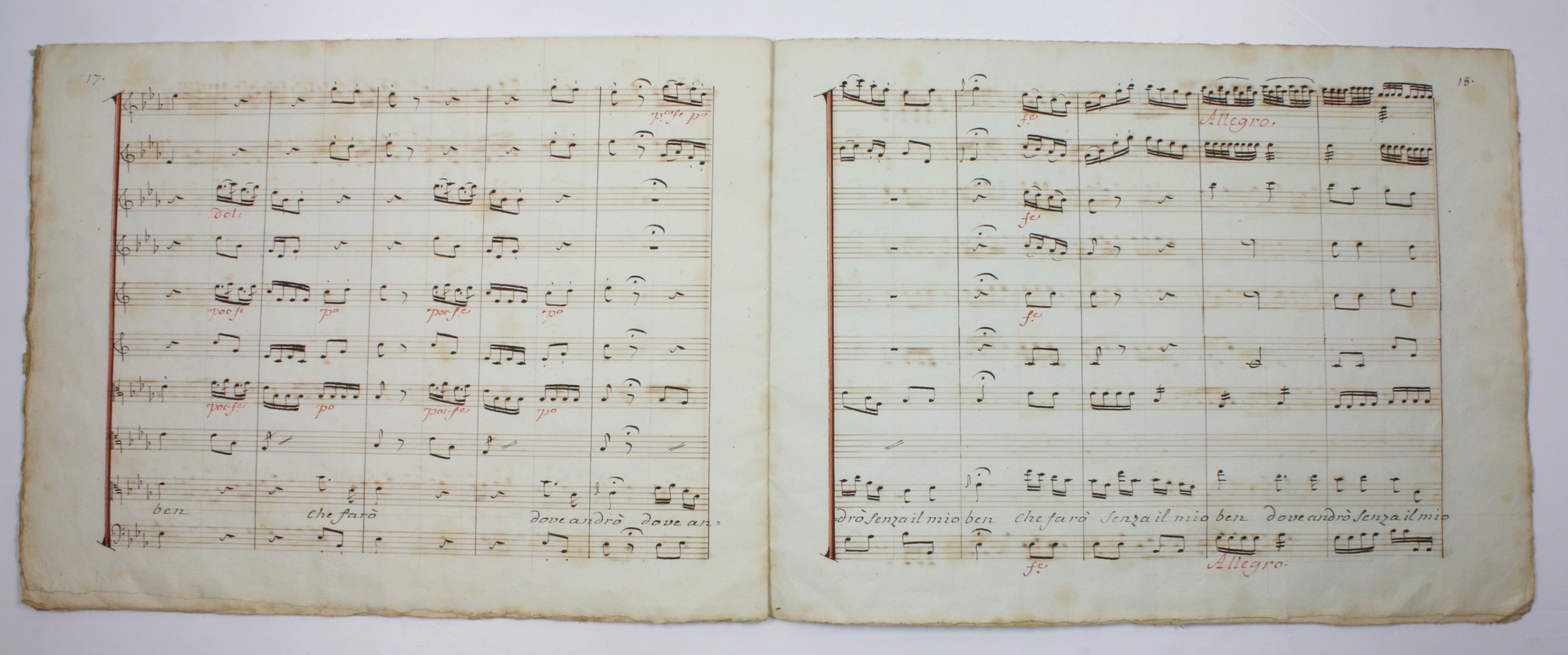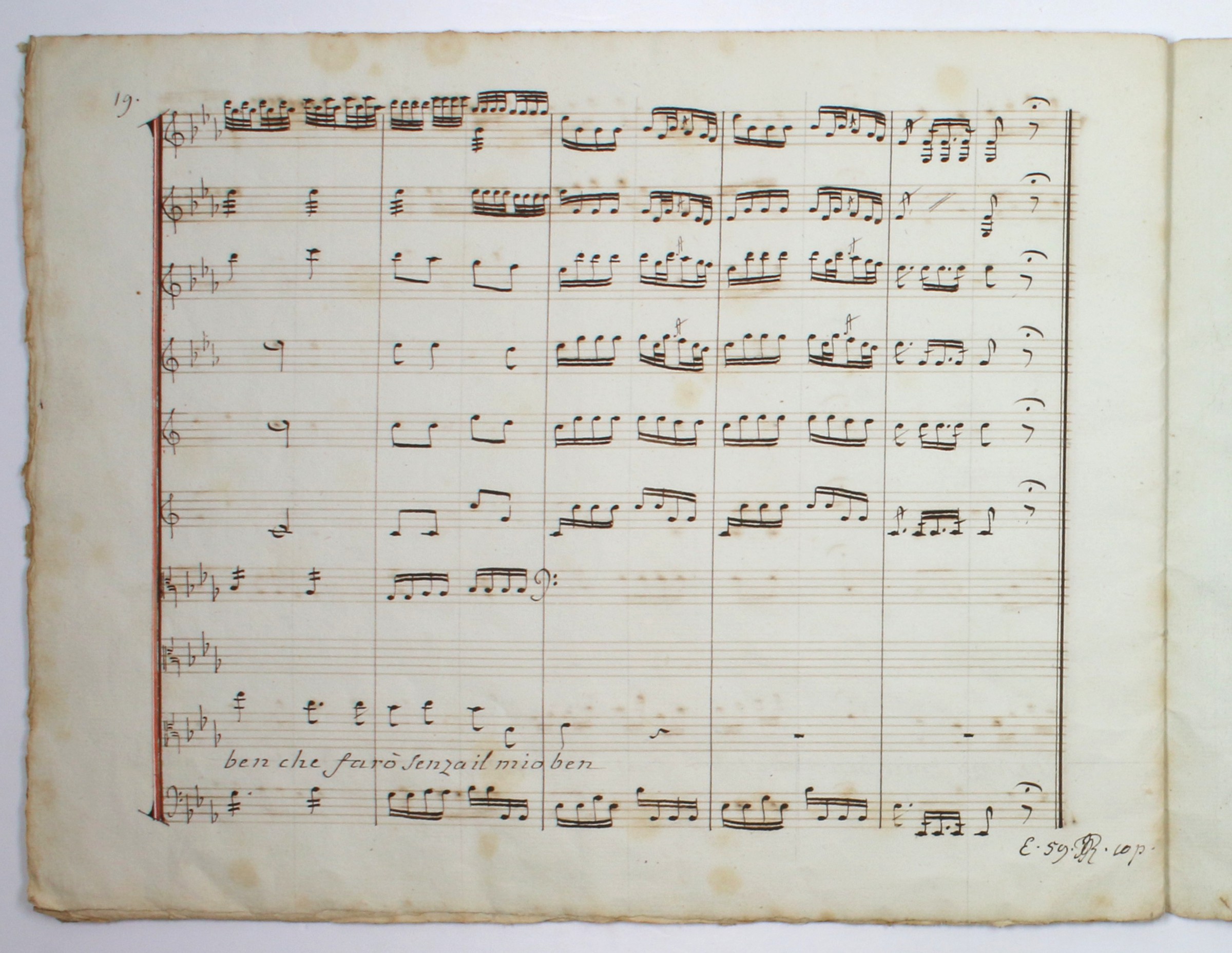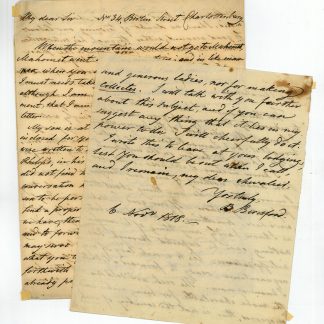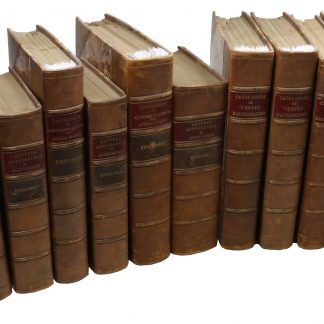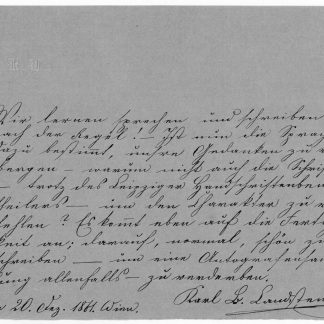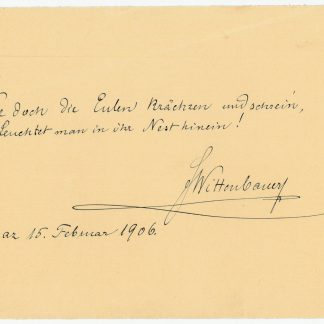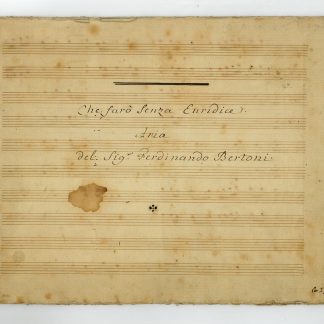Autograph musical manuscript signed (with his initials, "E.59 JJR. cop").
Oblong folio. Title page and 19 pp. score. Sewn.
€ 18,000.00
A musical manuscript entitled "Che faro Senza Euridice, Aria del Sigr. Ferdinando Bertoni", each page comprising ten staves traced by hand in a pale ink. The musical notes for the aria are attractively penned in a darker ink for two parts violin ("Violini"), two parts oboe ("Oboe"), two parts horn ("Corni"), two parts viola ("Viole") and the voice part ("Orfeo") with lyrics penned in Rousseau's hand, the indications of movement ("Andantino", "Presto", "Andno" etc.), as well as the indications of intensity and nuance, all penned in red ink. Each measure is divided in the middle by a very light vertical pencil line. With four blank pages of staves at the conclusion, the whole tied with a small pale blue ribbon. An elegant manuscript which still retains Rousseau's light pencil annotation ("19 p. a 8S - 7L12") at the head of the title-page, indicating the price charged for this copy.
Ferdinando Bertoni (1725-1813) was an Italian composer and organist who composed 70 operas, all of which fell into oblivion with the exception of "Orfeo", which was first performed in Venice in 1776. The work was based on the same libretto for the work of Christoph Willibald Gluck entitled "Orfeo ed Euridice". The aria Rousseau copied is the most famous one of the opera; in the third act, Orfeo mourns the loss of Euridice ("Che faro senza Euridice").
In his autobiographical work "Confessions", Volume VIII, Rousseau recounted how, in 1751, he ceased working for Dupin de Francueil and started working as a professional music copyist in order to provide a consistent and reliable source of income. In September 1770 he resumed his work as a music copyist and practiced it until 1777, charging ten sols per page. Rousseau's work as a music copyist has been described as remarkable for its beauty and reliability.
Some very light, minor staining and foxing throughout, a few small pinholes to the title-page, and one page with a small area of paper loss to the lower right corner, only very minimally affecting the manuscript.

